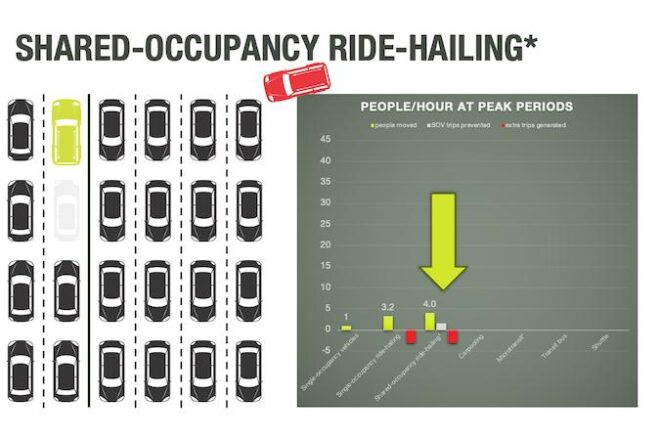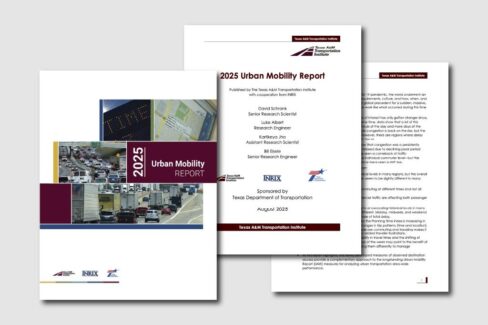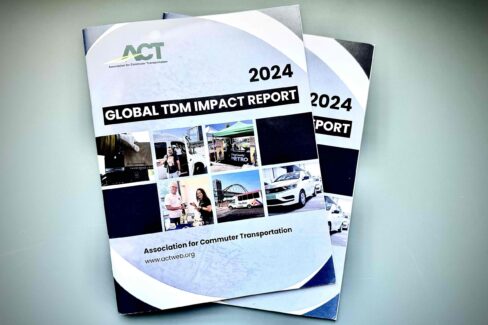2024 Annual Meeting Rapid Fire Presentation: “Comparing Modes”

Presented by Lispeth J. Tibbits-Nutt, Director of Development, at 128 Business Council’s 2024 Annual Meeting (April 25, 2024).
In a wide-ranging and data-rich presentation, Lispeth Tibbits-Nutt tackled a question many employers face: What commuting modes are worth investing in, and why? Using an original visual model, she compared the congestion and emissions impacts of major transportation options—including single-occupancy vehicles, ride-hailing, carpooling, transit buses, and shuttles—looking not just at how many people they move, but what hidden costs they generate.
Single-occupancy ride-hailing, she explained, often appears neutral but adds 1–2 extra vehicle trips per ride. Shared ride-hailing and microtransit aim for efficiency, but rarely achieve it—averaging only 3–4 riders per hour. Carpooling offers strong benefits but is limited by scheduling and geography.
Transit buses remain the most effective, efficient vehicle-based mode, moving up to 80 people per hour. However, traditional transit rarely reaches middle zones like the Route 128 West Corridor—denser than a suburb, but not dense enough to support high-capacity service.
The takeaway: Modal shifts don’t just depend on incentives, but on infrastructure. And shared systems, when done right, offer some of the highest-impact returns for employers and communities alike.
Jump straight to Lispeth’s presentation within the meeting recording here.

